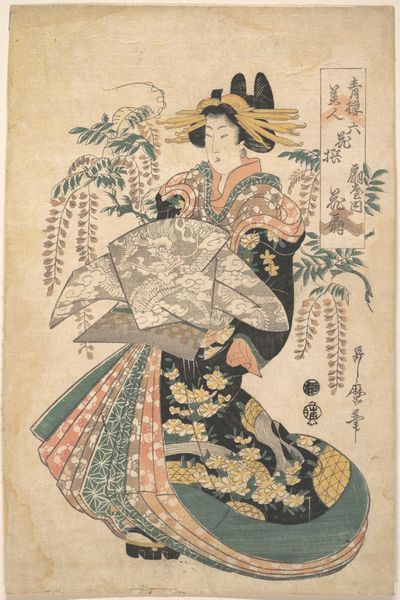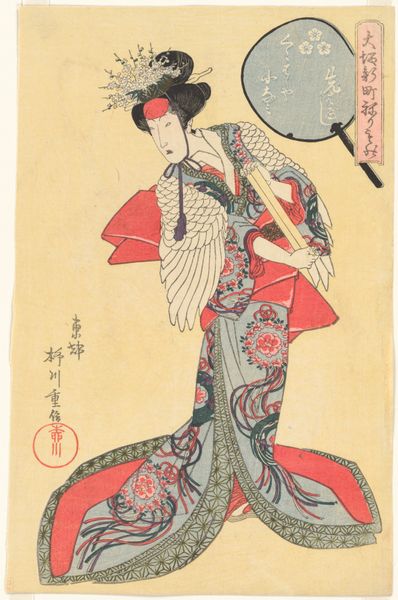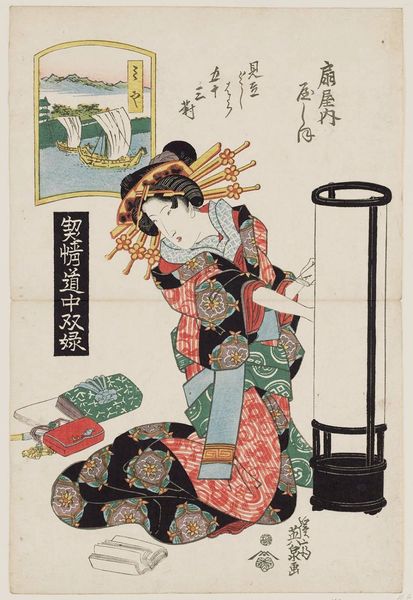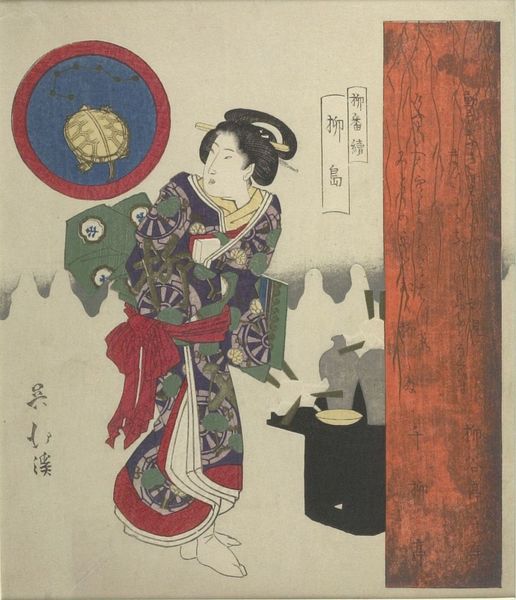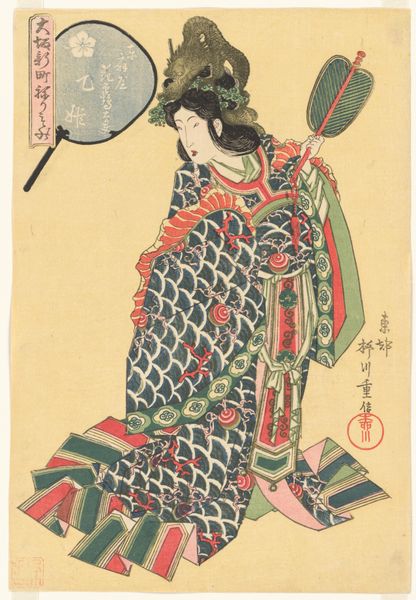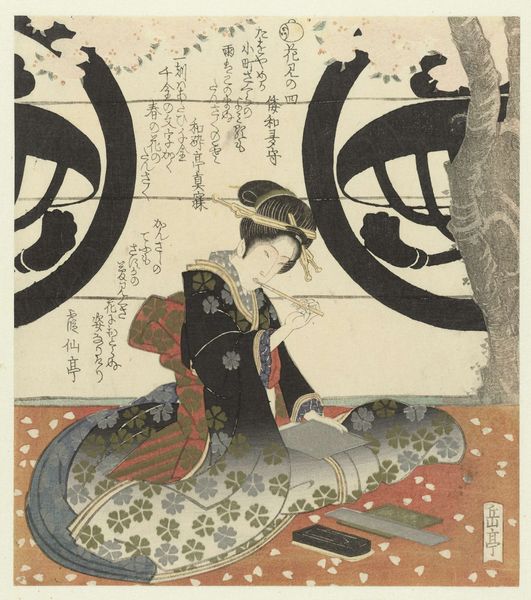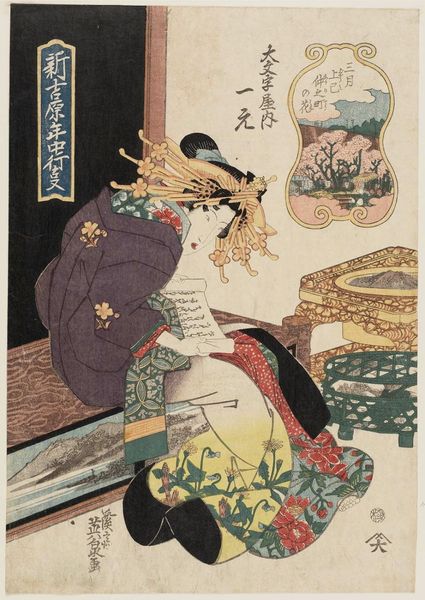
print, watercolor, woodblock-print
#
portrait
# print
#
asian-art
#
ukiyo-e
#
folk art
#
figuration
#
watercolor
#
woodblock-print
#
watercolour illustration
#
genre-painting
#
watercolor
Copyright: Public domain
This color woodblock print by Keisai Eisen depicts Chôdayû, a high-ranking courtesan, attended by two young kamuro, under cherry blossoms, probably in the 1830s. Japanese ukiyo-e prints like this one are often understood as reflections of an isolated and traditional Japan, but they also document the intense commercialism of the period. These prints were made for sale to the burgeoning middle classes of Edo, now Tokyo. The images present a romanticized view of the pleasure quarters, offering a form of escapism in a society marked by strict social hierarchies. But the beauty, fashion and celebrity on display reflect a particular urban industry. The artist and publisher are acutely aware of the market for their wares. Historians of art and culture look to the political, social and economic context, as well as material history and print culture, to develop a richer understanding of the meaning of images like this.
Comments
No comments
Be the first to comment and join the conversation on the ultimate creative platform.

